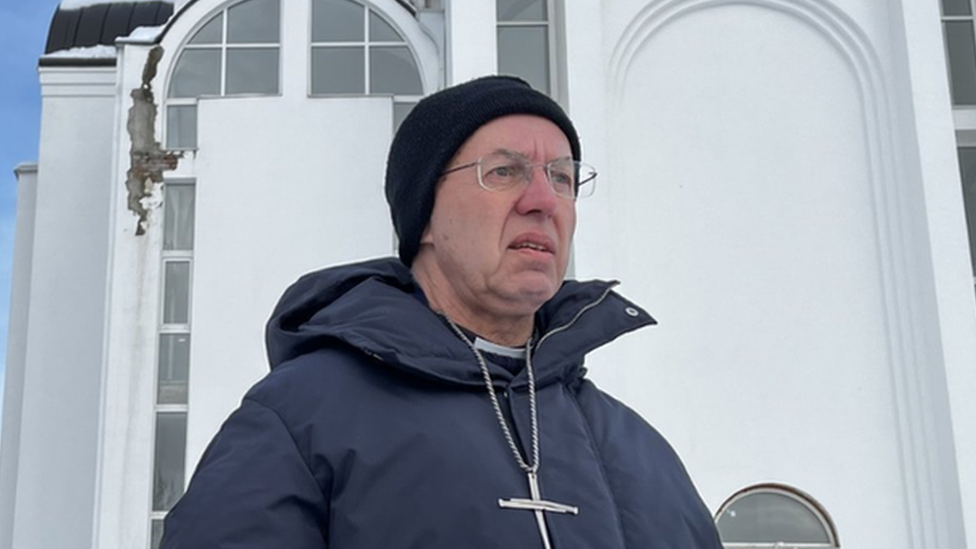Ukraine war: Learning to survive in Ladyzhyn, a town with no heating
- Published
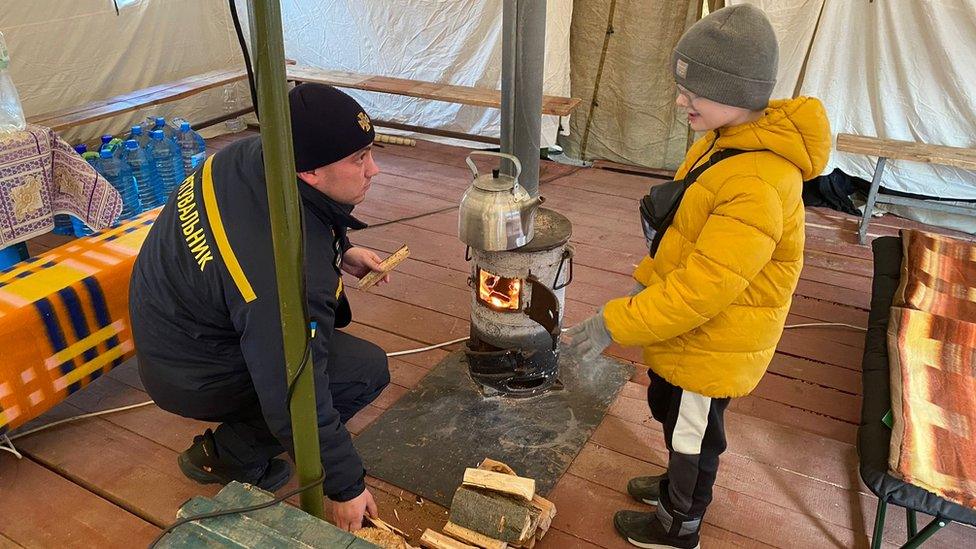
Wood-burning stoves keep young and old warm in the town of Ladyzhyn
Hundreds of kilometres from the front line, a state of emergency has been declared in Ladyzhyn, a town whose 18,000 residents lost their heating for a week.
Their only source of heating is a private, coal-based thermal power plant, which has come under repeated Russian attack, just like other energy facilities across Ukraine.
The most recent strike on 23 November left the town with blackouts and no heat at all. Power was finally restored on Thursday although it is taking time to warm the homes of residents.
The people of Ladyzhyn remain cautious, worried by the threat of another Russian missile attack on their infrastructure.
As temperatures fell below freezing, residents started using electrical heaters but they proved useless because of intermittent blackouts.
Losing access to all sources of warmth has been a fear for many Ukrainians who live far from the front line, but Ladyzhyn has been the first to face such a reality.


"I have a heater, but it keeps turning itself off, because there's no electricity; it's cold," says 70-year-old Mariia Buzynovska.
She was visiting one of Ukraine's new "invincibility stations", where people can come to get warm, charge their phones, have a cup of tea or collect a ration pack.
The now familiar sound of generators hums across the town's main square and wood burners keep the tent warm.
"At night I have a headache, and my ear aches, I take pills," says Mariia, sipping tea from a plastic cup. "As you know, cold and hunger aren't good friends in such a weather. I put on clothes and blankets to withstand this, to not get sick."
Residents can also work here using the internet, and for the more vulnerable there are rations, blankets and beds.
"The ration consists of hygiene items, water and the most basic medicines that may be needed," says Iuliia Kamenyuk, deputy chief of Ukraine's state rescue service in the central Ukrainian region of Vinnytsia, where Ladyzhyn is located.
"The most difficult moment was probably in the first days after the shelling. Water, heating and electricity were gone completely."
For Mariia, Ladyzhyn has always been a prosperous and peaceful town, centred around its thermal power plant - its biggest enterprise. That all changed when war came to Ukraine's eastern Donbas region in 2014 and she felt a full-scale Russian invasion might happen one day.
Beside her in the tent is Pavlo Palahuta, 40, who was evacuated from the eastern city of Slovyansk during the summer.
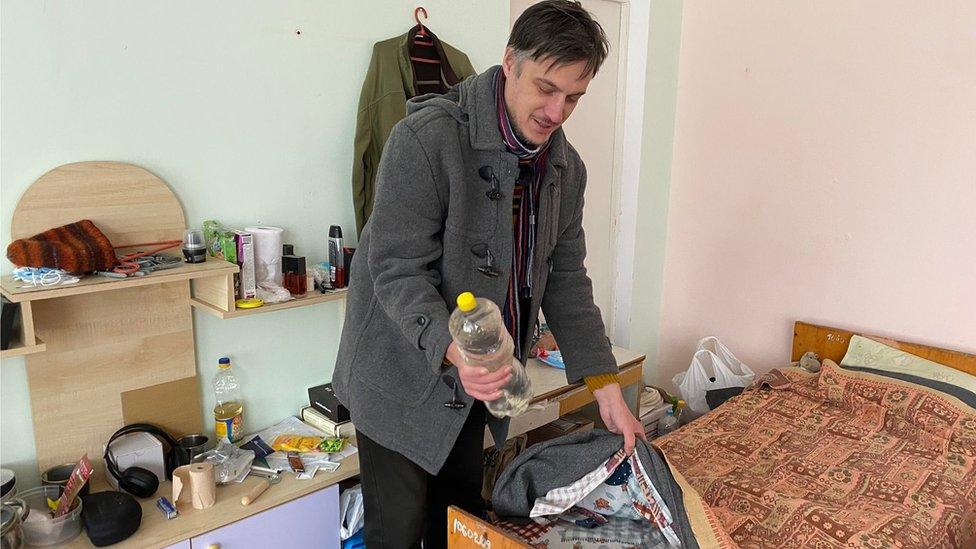
Pavlo Palahuta explains how he keeps warm with the help of plastic bottles filled with hot water
He found shelter from the war, until Russian shelling and its consequences caught up with him here too.
He is one of more than 6.5 million internally displaced people in Ukraine and is now living in an disused primary school with 37 other people.
"The boiler isn't working right now because the electricity is off," he says. "But I usually fill a bottle with hot water, close it tightly, dry the bottle and put a couple of them under the blanket, then I'm ready to stay warm for the evening."
"I put them around myself. I sleep fully dressed, and if you sleep alone they stay warm for four or five hours."
Vinnytsia's military administration is now working on providing additional sources of heating such as portable boiler houses and individual convection heaters. But it could take up to a month.
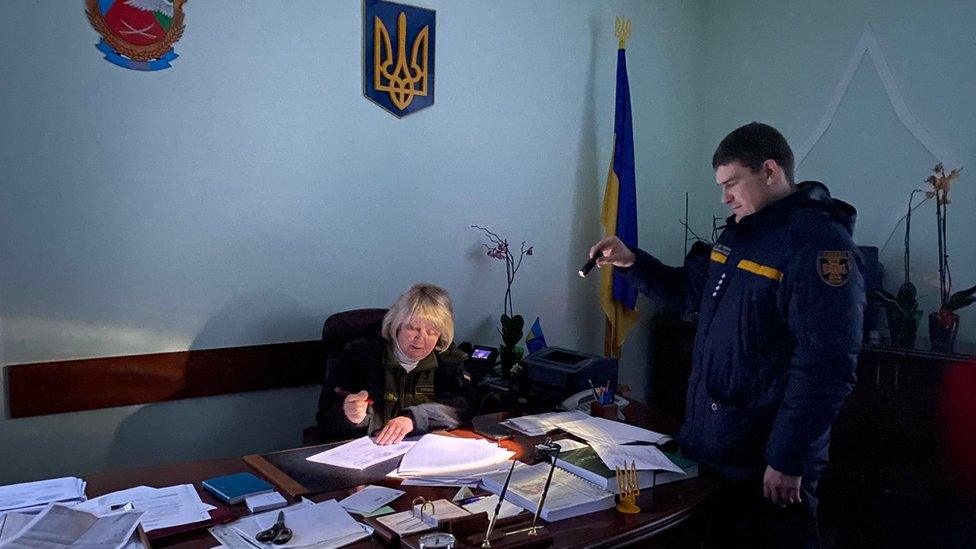
Signing documents by torchlight, Lyudmyla Holovashych says the area will have to find new sources of energy
Lyudmyla Holovashych, who chairs the military administration in this area, tells the BBC that they had been talking about diversifying their energy sources for more than a decade.
It was only when Russia's military began firing missiles at the local infrastructure this year that the issue became a matter of survival.
With outside temperatures below freezing, thermometers inside people's homes fell as low as 8C.
Ladyzhyn's authorities say that will soon change now that heating is coming back, although many residents are yet to feel it.
After more than a week of living in the freezer, people are praying Russian missiles do not strike again.
Related topics
- Published29 November 2022
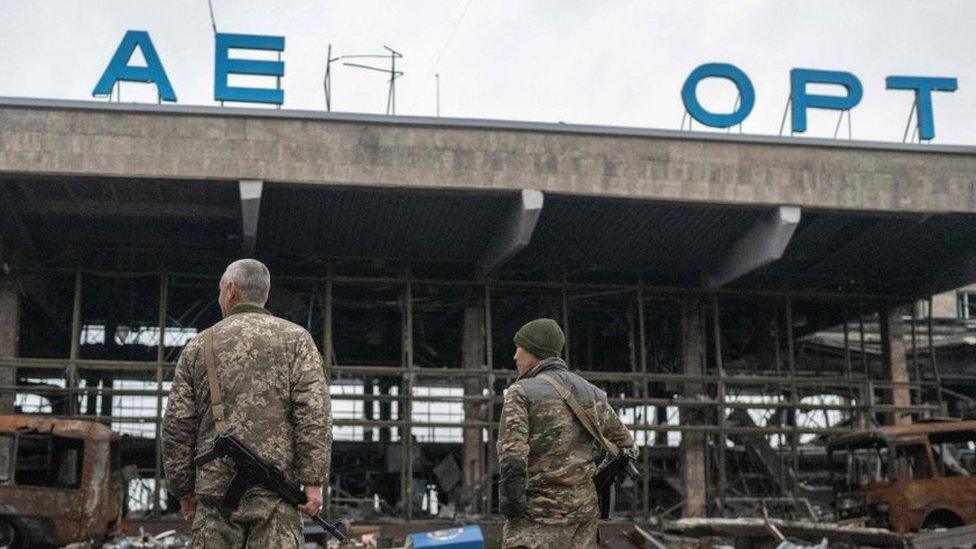
- Published2 December 2022

- Published2 December 2022
